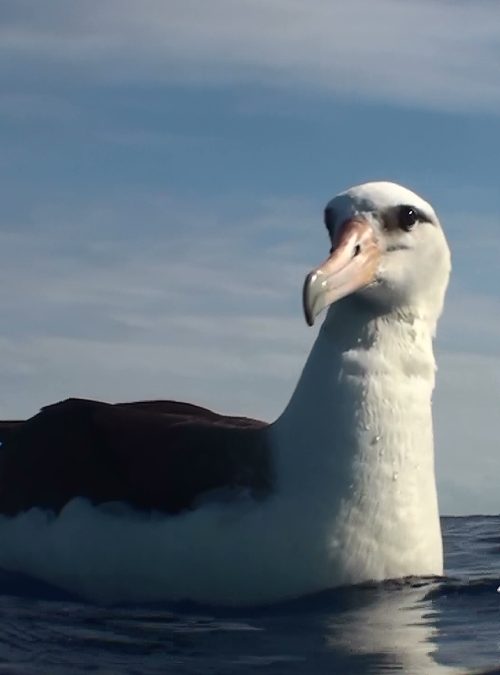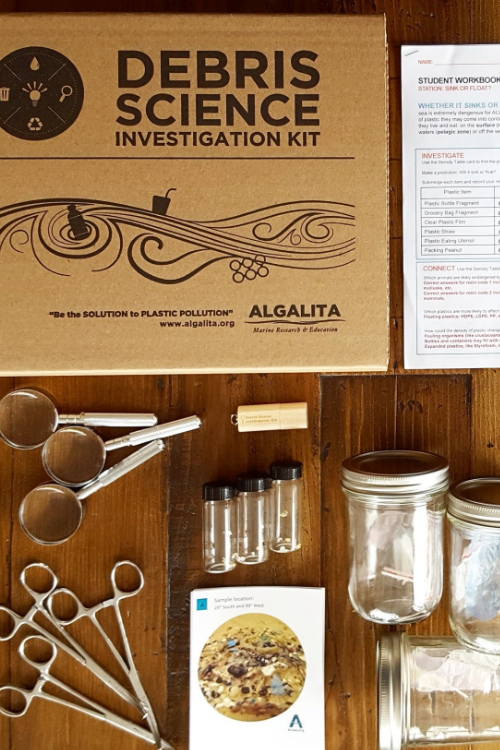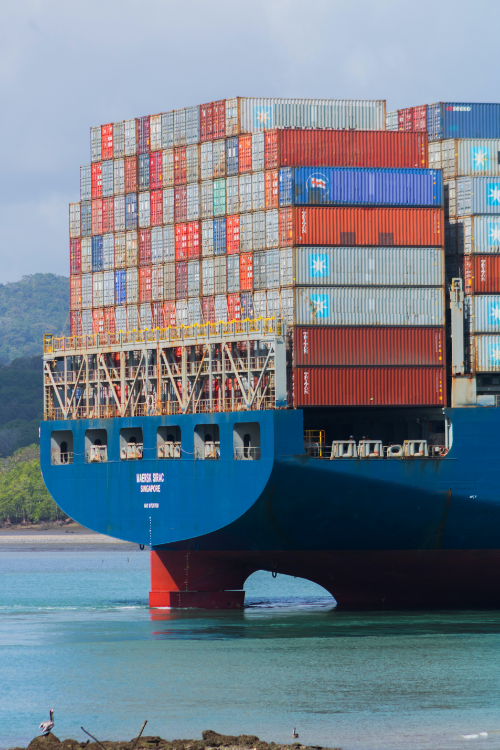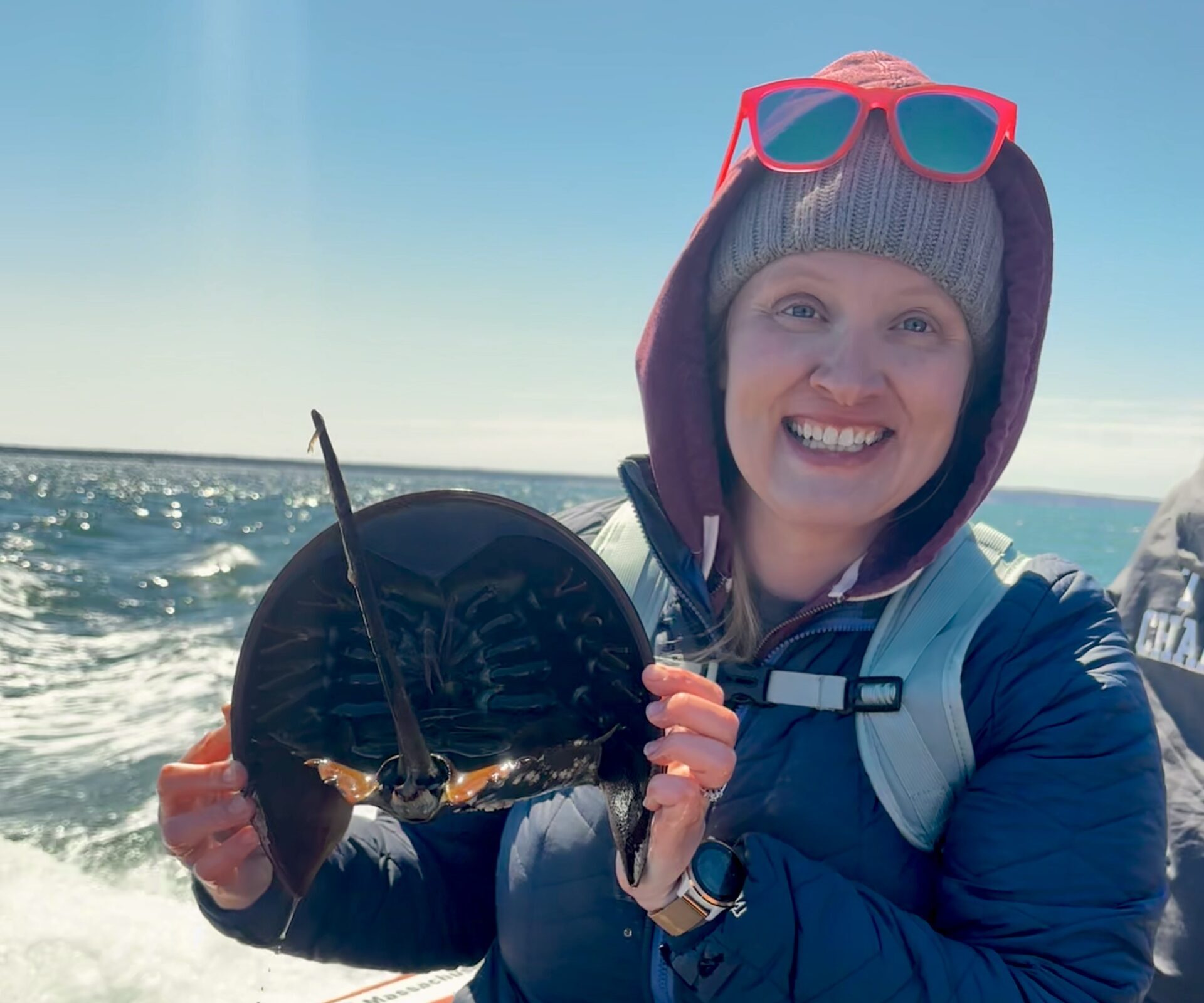
Lesson
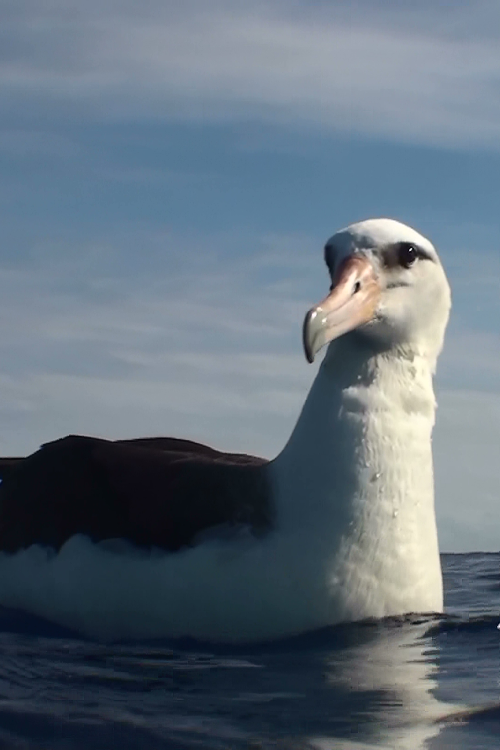
Photo credit: Algalita
Explore how plastic gets into and impacts ecosystems by analyzing evidence from photographs.
Grades 6 and up
Time Needed 30 to 60 minutes
Standards NGSS Science and Engineering Practices, NGSS MS-LS 2-4, APES Unit 8
Subjects Human Impacts on the Environment, Water Pollution, Point and Non-point Source Pollution, Ecosystems
Editable Downloads (Save a copy or download to edit)
– Sources and Sinks – Intro Slides – Google Slides
– Sources and Sinks – Purpose and Context – Google Doc
– Sources and Sinks – Image Cards – Google Slides / Sources and Sinks – Image Cards – PDF
– Sources and Sinks – Student Worksheet – Google Doc
– Sources and Sinks – Lesson Key – Google Doc
Summary
Students analyze evidence, ask questions, and conduct research to answer the questions:
- How does plastic get into the environment?
- Where does plastic accumulate in the environment?
- How does plastic pollution impact ecosystems?
Core Activity:
- Students analyze up to 10 images depicting evidence of plastic pollution in our environment.
- Students discuss what they think the images are showing and ask questions about the evidence to deepen their thinking. Educator can provide more detail as shown in key, or have students conduct their own research.
- Students present their analysis of the evidence and research to the rest of the class.
- Groups work together to develop a model diagram showing the sources and sinks of plastic in the environment.
Extensions:
- Add physical evidence by including an ocean water sample and/or sand sample from our Plastic Ocean Kit and Synthetic Sand Kit.
- Extend this lesson to include primary evidence: incorporate a student-led investigation of litter on campus, or near by park, using our Campus Cleanup Lesson.
- Discuss the meaning in context to the standard you are addressing. See Extensions section under Instructions.
- Design a solution that addresses plastic pollution at one of its sources.
Purpose and Context
[See Sources and Sinks – Intro Slides – Google Slides for editable presentation slides with this information. Or, distribute this text using Sources and Sinks – Purpose and Context – Google Doc.]
When scientists talk about pollution, they often use the term “source” to describe where a pollutant is coming from and the term “sink” to describe where or in what the pollutant ends up, is stored, or accumulates. To help remember these terms, you can think of a faucet and kitchen sink – the faucet is the source of water, and the basin under the faucet is the sink where the water ends up in. A source could be a certain activity, product, region, or type of infrastructure like a pipeline or factory that releases a pollutant into the environment. A sink could be any physical or biological component of an ecosystem, for example, the air, soil, a body of water, or a certain plant or animal that takes in a pollutant.
It’s important to know how plastics get into and travel around the environment and how the pollution is impacting wildlife, so that we can design better solutions to protect habitats and organisms in them.
Scientist have been studying habitats and ecosystems throughout the world to research where plastics are ending up. They are finding plastics everywhere they look – streams, rivers, lakes, and oceans, the atmosphere, our soils, mountain glaciers, icecaps, and even compost [1, 2]. The size, shape, and the density of each piece of plastic pollution each impact how it gets transported, where it ends up, and which organisms are affected by it. We need a diverse set of solutions to address the many forms of plastic pollution and their various impacts on animals, plants, and habitats.
We’ve assembled ten photos that depict some of the sources and sinks of plastic pollution, and a couple of prompts to help guide your and your student’s analysis of the images.
Sources
[1] Zalasiewicz, Jan, Waters, Colin N., Ivar do Sul, Juliana, Corcoran, Patricia L., Barnosky, Anthony D., Cearreta, Alejandro, Edgeworth, Matt, Galuszka, Agnieszka, Jeandel, Catherine, Leinfelder, Reinhold, McNeill, J.R., Steffen, Will, Summerhayes, Colin, Wagreich, Michael, Williams, Mark, Wolfe, Alexander P., Yonan, Yasmin, The geological cycle of plastics and their use as a stratigraphic indicator of the Anthropocene. Anthropocene http://dx.doi.org/10.1016/j.ancene.2016.01.002
Instructions
Prepare
- Familiarize yourself with the image cards (Sources and Sinks – Image Cards – Google Slides). Each image depicts an aspect of the sources or sinks of plastic in the environment. Most images also include a description or information to understand the image. Decide how many images you want each student or group to analyze, and adjust the worksheet to match. We recommend not to include image #5 for middle school students and younger students.
- Print out the Image Cards and cut the printouts along the dotted lines, or upload the Image Cards onto your Learning Management System (LMS) for students to access digitally.
- Print the student worksheets (Sources and Sinks – Student Worksheet – Google Doc). These can be edited as needed.
- Review the Introductory Slides (Sources and Sinks – Intro Slides – Google Slides) if you’d like to use them. Edit as needed.
*Note: To edit our materials, click “File” in the menu, then “Save A Copy” to your Drive, or “Download” to your computer. Then edit your personal copy.
In class
- Pass out the student worksheet (Sources and Sinks Student Worksheet Google Doc).
- Introduce the topic and objectives using the presentation slides (Sources and Sinks – Intro Slides – Google Slides).
- Have students do a Think-Pair-Share of the sources and sinks of plastics in the environment, using their prior knowledge. They can take notes and record responses in their worksheet.
- Pass out image cards. Students can work in pairs or groups each analyzing 1 or 2 images, or individually. Decide how many images you want each student to analyze and adjust the student worksheet accordingly.
- Students analyze their image cards, for evidence of the sources, sinks, and impacts of plastic pollution. For each image they come up with a question that the image sparks, recording their responses on their worksheet.
- Have students conduct research on their question, or discuss possible answers as a group. You can use the Lesson Key which has more information on each image.
- Optional extension: Students collect their own data on plastic pollution on campus using our Campus Cleanup Lesson.
- Students develop a model diagram showing the sources and sinks of plastics in the environment depicted in the image cards, to summarize their findings on the questions: ““How does plastic get into the environment?” and “How does plastic pollution impact ecosystems?”
Extensions
For NGSS MS-LS 2-4, discuss:
- How does the presence of plastic change the ocean (or river) habitat? Do you think plastic pollution could influence the ability of a marine population, for example, California sea lions, to reproduce and maintain their population levels? Explain your reasoning?
For APES 8.1 Sources of Pollution STB-3.A.2, discuss:
- Is plastic litter a point-source or nonpoint-source of pollution? Do any of the image cards depict or suggest point-sources of plastic pollution? Do any of the image cards depict or suggest nonpoint-sources of plastic pollution?
For NGSS Science and Engineering Practices, design a solution:
- Solutions at the Source: Pick a plastic item shown or described in the image cards. In your group, discuss a possible solution to prevent that specific item from getting into the environment in the first place. (Tip: Think about why we use that product or item in the first place, and what we could do instead to avoid using that kind of plastic item. What sort of alternative products, systems, or strategies would need to be created, engineered or designed?)
Tips and Suggestions
- Suggested learning format: Students work in small groups. Each group is assigned a subset of images to analyze. Then groups share their interpretation and questions with the whole class. Educator facilitates further discussion.
- Some of these images are quite graphic. Many organisms are harmed by plastic pollution, but we can each do our part by limiting our use, making sure we don’t litter, and informing others about the problem. Let students know that they are already helping out by learning about this today.
Associated Standards
NGSS
- Science and Engineering Practices: Asking Questions, Developing Models, Obtaining, Evaluating, and Communicating Information
- MS-LS 2-4 Construct an argument supported by empirical evidence that changes to physical or biological components of an ecosystem affect populations.
AP Environmental Science
- 8.1 Sources of Pollution STB-3.A.2 Nonpoint-sources of pollution are diffused and can therefore be difficult to identify, such as pesticide spraying or urban runoff.
- 8.2 Human Impacts on Ecosystems STB-3.B.8 Litter that reaches aquatic ecosystems, besides being unsightly, can create intestinal blockage and choking hazards for wildlife and introduce toxic substances to the food chain.
Educator Survey
Data is key. Help us understand how this free resource is being used.
Related Resources
Toolkit: A Plastic Ocean Teaching Kit
Investigate the impacts of microplastics on our oceans with 3 rotating activities.
Grades 5 and up
50 minutes
Explore more
Plastic Pollution Basics
A quick crash course on plastic pollution and what we can do about it!
Learn more
The Story of Plastic (Animated Short)
A brief introduction to the issue of plastic pollution, produced by Story of Stuff.

